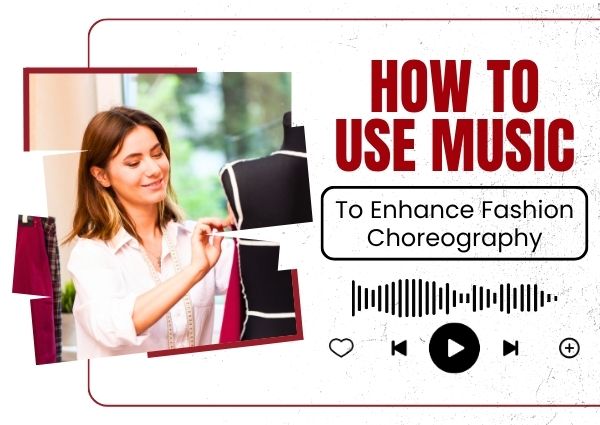At Babla Kathuria, we believe that the perfect blend of sound and movement creates runway magic. Whether it’s a couture showcase or a street-style collection, music transforms choreography into visual rhythm. Here’s how you can use music strategically to enhance your fashion choreography and leave your audience spellbound.
Why Music Matters In Fashion Choreography
Music is the unsung hero of every great fashion show. It has the power to:
- Set the tone for the collection (romantic, fierce, rebellious, elegant)
- Control the pace of model walks and transitions
- Highlight key fashion moments, like a showstopper entry or finale
- Create brand recall through iconic soundtracks
- Synchronize the choreography into a seamless performance
Without the right music, even the most luxurious designs can fall flat.
Step 1: Understand The Designer’s Vision
Before choosing the music, understand the theme, inspiration, and emotion behind the collection. Is the collection inspired by tribal art? Futuristic minimalism? Royal Indian heritage? Your music should reflect the aesthetic.
At Babla Kathuria, we always start with a deep dive into the collection’s story—colors, fabrics, mood boards—so that our choreography and music work together to bring it alive.
Step 2: Match The BPM (Beats Per Minute) To The Walk
The BPM of a track directly impacts the model’s stride, timing, and confidence. A slow BPM (60–80) gives a dreamy, graceful vibe. A high BPM (120+) builds energy and power.
- Casual or streetwear: Use upbeat tracks to add swagger and bounce.
- Bridal or couture: Go for orchestral or slow-tempo romantic pieces.
- High fashion/edgy: Experiment with electronic, ambient, or industrial beats.
Pro Tip: Use a metronome or BPM analyzer to match track tempo with the average model walk pace (usually around 110–120 BPM).
Step 3: Segment The Show With Soundscapes
Don’t use just one track for the entire show. Break the event into segments:
- Opening sequence: Bold, attention-grabbing music
- Model walk loop: Repetitive but engaging rhythm
- Celebrity showstopper: Unique or slower remix for impact
- Finale walk: Uplifting, victorious beats
- Designer walk: Light, celebratory tones
We often create custom DJ mixes at Babla Kathuria that flow smoothly between tracks without disrupting transitions
Step 4: Sync Movement With Musical Highlights
Great fashion choreography is about hitting musical accents. Whether it’s a beat drop, violin crescendo, or bassline kick—use these moments to choreograph:
- A strong pose or turn
- A group model crossover
- The start of a solo walk
- A lighting shift
This builds theatrical impact and keeps the audience engaged both visually and emotionally.
Step 5: Rehearse With The Final Music Track
Don’t wait until the final day to introduce music. Your choreography and music must grow together.
- Play the final track during every rehearsal.
- Help models internalize the rhythm—especially the cues for entry and pose.
- Coordinate with the light and AV team to sync transitions and spotlights.
At Babla Kathuria, we run music drills with models until every step feels natural and smooth.
Step 6: Play With Genres, Languages & Cultures
Music can introduce cultural layers to your show. Think Afrobeat for African-inspired collections, traditional Indian classical for ethnic wear, or synth-pop for futuristic edits.
Don’t be afraid to mix genres:
- Blend old Bollywood with techno.
- Add tabla beats to an R&B track.
- Remix traditional folk into a modern beat.
When done creatively, music becomes a cultural connector and makes your fashion show stand out.
Step 7: Use Live Music For Dramatic Effect
If budget and space allow, live musicians can take your show to the next level.
- A live violinist during a bridal sequence
- A DJ spinning tracks in real time
- Percussionists walking alongside models
Live music brings energy, spontaneity, and audience immersion—something no audio file can match.
Common Mistakes To Avoid
- Using music that overpowers the visuals
- Choosing trendy songs that don’t match the theme
- Forgetting to license copyrighted music
- Poor sound system or unbalanced acoustics
- No backup music in case of technical glitches
Solution: Always have a licensed playlist, soundcheck in advance, and bring backups on USB or cloud.
At Babla Kathuria, we choreograph runway experiences that dance to the rhythm of creativity. With the perfect soundtrack and precision movement, your fashion brand can own not just the stage—but the moment.

